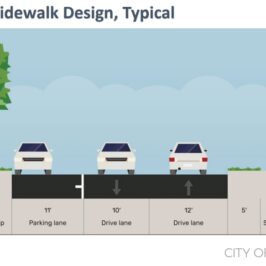MADISON NEIGHBORHOODS QUALITY of LIFE – 2018 Report
Map Viewer About the Data Comparison Report Quick Tour feedback form
The Madison Neighborhood Indicators Project (NIP) is a tracking system designed to follow neighborhoods’ wellness over time. Data has been collected since 2008 and can be used to identify trends. The NIP aims to support better understanding of the changes within Madison neighborhoods. The use of the indicators along with local knowledge and other informational resources can help all Madison neighborhoods thrive.
Topics in the NIP, 2020 Edition
The NIP annually measures 56 variables organized within seven topics:
- People and Place
- Housing
- Public Safety
- Health
- Education
- Economy
- Transportation
NIP Geographies
- City of Madison
- Plan Districts
- Neighborhood Associations
For more information about neighborhood associations in Madison, please see the City of Madison Neighborhoods page.
Who Can Use the NIP?
The NIP can be used by anyone, including community-based organizations, non-profits, educational institutions, the business community, and governmental officials and staff.
Example Uses for the NIP
- writing grants
- comparing neighborhood wellness by specific indicators
- comparing neighborhood changes over time
- helping neighborhood organizations build capacity
Public Input
The current roster of indicators was developed with guidance from City and community leaders. Input from users continues to help us to refine and improve the data and tools. The NIP coordinators welcome your feedback! Please use our feedback form or contact us directly.
Data Privacy
Sensitive data items have been suppressed for some geographic areas to prevent disclosure of personally identifiable information.
Website Privacy Policy
Please see the City of Madison privacy policy.
Disclaimer
NIP data sets are provided by the UW Applied Population Laboratory (APL) for informational purposes. The Applied Population Laboratory expressly disclaims the accuracy, adequacy, or completeness of any data and shall not be liable for any errors, omissions or other defects in, delays or interruptions in such data, or for any actions taken in reliance thereon. Neither the APL nor any of its data providers will be liable for any damages relating to use of the data provided herein.
Geographies
Plan Districts
Neighborhood Associations
VariablesPeople & PlaceHousingPublic SafetyHealthEducationEconomyTransportation
- Land Area
- Housing Units
- Owner Occupied Homes
- Total Population
- Young Children – Age 0 to 4
- Youth Population – Age 0 to 17
- Senior Population – Age 65 and Over
- White
- Black or African American
- Asian
- Other Races or Multiracial
- Hispanic or Latino
- Total Households
- Family Households
- Families with Children
- Female Headed Families with Children
2020 Edition
1.8 mi
Leaflet | © OpenStreetMap, © CARTO Search Map
Search Map Add Overlays
Add Overlays
Total Population (Census 2010)2020 Edition
Estimated total population. Read more
Crawford-Marlborough-Nakoma Neighborhood Association
Clear SelectionsShare This ViewGo To Report
| Total Population (Census 2010) | |||
|---|---|---|---|
| Location | 2020 Edition | Change 2011-2020 Edition | |
| City of Madison | 232,965 | 389 |  |
| Crawford-Marlborough-Nakoma Neighborhood Association | 2,475 | N/A | |
Table View Options: Show Selection and ChangeShow All Years
Download Table
Why This Is Important
Population counts vary considerably across neighborhoods, so keeping those differences in mind is important when making comparisons between them. For instance, more populous areas are likely to have more community pride violations or crime incidents, but that does not mean the per capita rates of pride violations and crime are necessarily higher in those areas.
Did You Know?
Because the total population estimates are based on the 2010 Census, they may not fully reflect recent developments that have significantly increased the population in some areas. Population growth is most likely to have occurred in places where the number of dwelling units has increased significantly since 2010.
About the Data
•
APL estimates based on 2010 Census. Because these figures are derived from 2010 data, any changes over time are a result of boundary changes; they do not reflect actual changes in housing since 2010.
Data Source
0809101112131415161718192020 Edition
Census 2010 block data.
Report Options: Standard Advanced (choose any geography and year combination)
Download or Print Report
Comparison Report for Selected Neighborhood Associations, 2020 Edition
| City of Madison | Crawford-Marlborough-Nakoma NA | |
|---|---|---|
| Housing | ||
| Madison Dwelling Units | 126,479 | 1,091 |
| Madison Subsidized Dwelling Units | 7,142 | 0 |
| Campus Dwelling Units | 6,991 | 0 |
| Median Year Built | 1977 | 1946 |
| Property Foreclosures | 120 | 2 |
| Community Pride Violations | 1,259 | 5 |
| Owner Occupied Houses: Average Value | $310,806 | $476,831 |
| Owner Occupied Houses: Square Foot Value | $164.70 | $218.60 |
| Condos: Average Value | $208,641 | $128,912.5 |
| Condos: Square Foot Value | $169.30 | $151.80 |
| Non-Owner Occupied Houses: Average Value | $334,156.6 | $475,787.5 |
| Non-Owner Occupied Houses: Square Foot Value | $165.50 | $213.00 |
| Public Safety | ||
| Reported Police Incidents: Person Related | 1,127 | 3 |
| Reported Police Incidents: Property Related | 8,339 | 46 |
| Reported Police Incidents: Society Related | 6,907 | 8 |
| Verified Criminal Offenses: Person Related | 2,474 | 5 |
| Verified Criminal Offenses: Property Related | 10,812 | 59 |
| Verified Criminal Offenses: Society Related | 11,882 | 20 |
| Crashes | 2,411 | 25 |
| EMS Service Calls | 19,269 | 140 |
| Fire Service Calls | 9,829 | 59 |
| Health | ||
| Infant Health: Full Term Births | 90.8% | suppressed |
| Prenatal Care: Adequate | 85.0% | suppressed |
| Education | ||
| Kindergarten Readiness | N/A | N/A |
| Parent Education Level: No High School Diploma/G.E.D. | 6.7% | suppressed |
| Parent Education Level: College Graduate | 53.1% | suppressed |
| High Mobility Students | 4.7% | suppressed |
| Economically Disadvantaged Students | 47.7% | suppressed |
| Childcare Providers | 301 | 7 |
| Childcare Capacity | 12,108 | 285 |
| Childcare Enrollment | 4,113 | 17 |
| Economy | ||
| Median Household Income | $65,332 | N/A |
| Family Households in Poverty | 3,062 | N/A |
| Unemployment | 3.1% | N/A |
| Basic Goods & Services (Pharmacies, Banking, Groceries) | P,B,G | B,G |
| Transportation | ||
| Transit Stop Access | 75.0% | 59.0% |
| Available Transit Service | 10,380 | 968 |
| Households with Access to a Vehicle | 88.6% | N/A |
| Pavement Condition | 6.7 | 6.3 |


The Madison Neighborhood Indicators Project is a project of the City of Madison Planning Division.
Website produced by the Applied Population Laboratory at UW-Madison • Privacy Policy
To help us improve this site, please use our feedback form.






